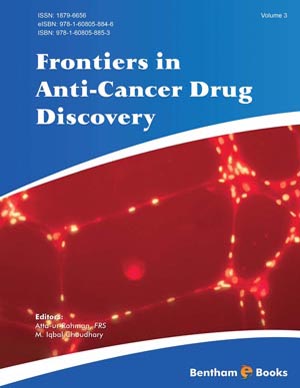Abstract
Although advances have been made in reducing mortality rates and improving survival, cancer is still the second world cause of death among men and women. Such an unfavorable prognosis is a consequence of its complex genetic nature that makes it difficult to diagnose and treat. Moreover, due to inherent ability of cancer cells to acquire resistance to cytotoxic agents, most therapies eventually fail, resulting in resumption of disease progression. Therefore, the call for the discovery of less toxic, more selective, and more effective agents to treat cancer has become most urgent. At this moment, molecular targeted therapy looks most promising. Small-molecule and antibody therapeutics against targets implicated in PI3K-Akt pathway such as EGFR (e.g., cetuximab, gefitinib), erbB2 (trastuzumab, lapatinib), mTOR (sirolimus, temsirolimus), in tumor angiogenesis such as VEGFR (bevacizumab, sunitinib) and αvβ3 integrin receptors (cilengitide) as well as against other tyrosine kinases such as Abl (imatinib, nilotinib), have delivered clinical efficacy in certain disease settings. The emergence of these therapies has led to an era of treatments increasingly aimed at certain patient populations, and this has implications for the development of future novel treatments. However, cancer cells could develop the resistance to anti-cancer drugs in molecular targeted therapy, like in conventional chemotherapy, by several mechanisms. Resistance mechanisms include increased DNA damage repair, reduced apoptosis, altered drug metabolism and site of action, increased energy-dependent efflux of hydrophobic anticancer agents that enter cells. The latter refers to multi-drug resistance (MDR) which is one of the major and most common obstacles for the effective treatment of cancer. The most frequent mechanism underlying MDR is overexpression of P-glycoprotein (P-gp)/MDR1/ABCB1 which acts as an efflux pump for various hydrophobic anticancer drugs. Among them are anticancer drugs of previous generations (such as anthracyclines, Vinca alkaloids, taxanes, epipodophyllotoxins), of new generation (e.g., imatinib, nilotinib, everolimus), as well as other tumor signal transduction inhibitors currently undergoing clinical investigation (aurora B kinase inhibitor AZD1152). The most striking feature of ABCB1 is its remarkable spectrum of substrates. Namely, ABCB1 recognizes and mediates the transport of thousands of substrates without specified structural determinants. Therefore, anti-ABCB1 therapy represents a significant step forward in cancer therapy. However, many things remain to be clarified, such as how to use anti ABCB1 therapeutics, what is the biological consequence of ABCB1-blockade, etc. We know that tumors are very diverse and plastic entities, able to adapt to various conditions. Lessons that we have learned in cancer research, taught us that the diversity of signal networks underlying tumor growth could eventually overcome our efforts in finding efficient therapeutic approaches. In this chapter, we present a reflection of new anti-cancer therapeutic strategies driven toward specific molecular targets, their benefits and limitations.
Keywords: ATP-binding cassette (ABC) transporters, multi-drug resistance (MDR), p53, P-glycoprotein (ABCB1), targeted anti-cancer therapy, tyrosine kinase inhibitor (TKI).






















